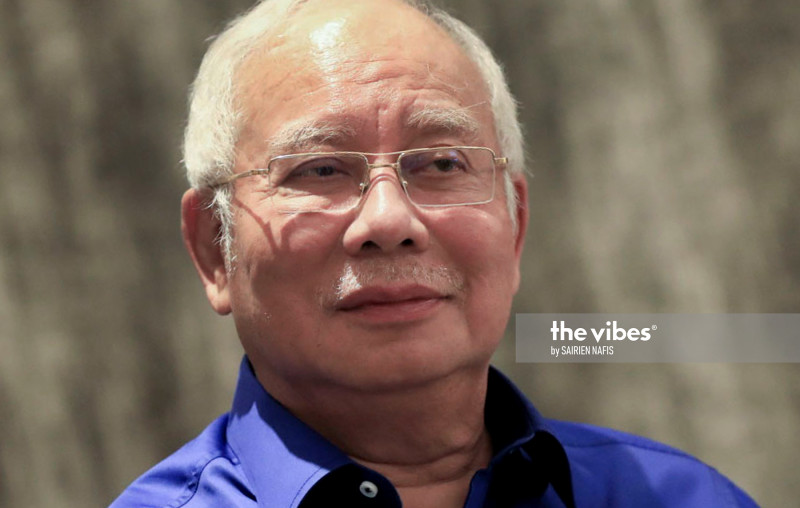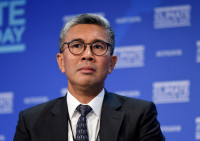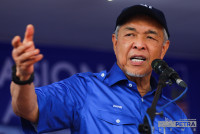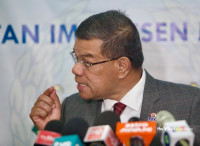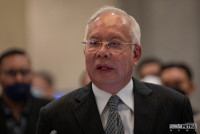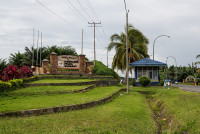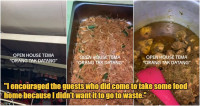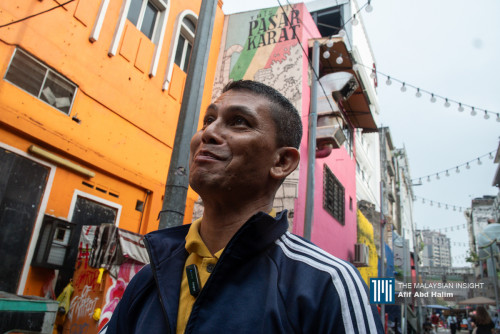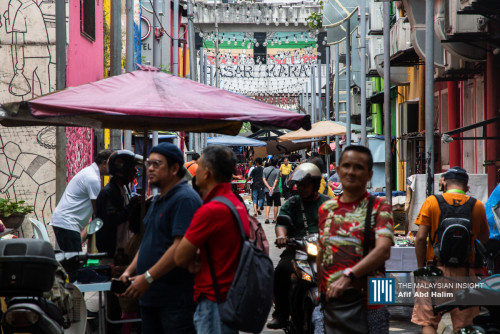
EVENTS unfolding at the Federal Land Development Authority (Felda) tell a tale of woe of how former prime minister Datuk Seri Najib Razak designed a plan that ostensibly rewarded Felda settlers and raised RM10 billion, most of which has been squandered.
On top of that, investors, large and small including Felda settlers, who plugged over RM10 billion into Felda-linked FGV Holdings’ initial share sale offer and a sale by Felda itself of FGV shares have lost over 70% of their money or some RM11.5 billion. That totals RM21.5 billion!
And he was doing this even as he had sunk his fingers into what was the 1Malaysia Development Bhd (1MDB) pie, where billions were borrowed and the same billions were stolen.
The recent acquisition by Felda of shares in associate company FGV represents the failure of the latter’s listing through which a substantial part of the operations of Felda were separated and some assets were monetised.
It is now clear beyond doubt that investors who bought into FGV crystallised their losses and those who bought the shares at the issue price of RM4.55 each at the time of listing in June 12 would now have made a rather huge loss of over 70% of their money.
FGV’s share price at listing was RM4.55 for a market value of just over RM16 billion, raising over RM10 billion, second only to Facebook’s listing that year in terms of fundraising which was US$16 billion. Currently, FGV trades at around RM1.30, over 70% lower than the issue price for a market value of RM4.6 billion.
Felda announced Tuesday that it is buying a 6.1% stake in FGV from Kumpulan Wang Persaraan for RM289 million cash and a 7.78% stake from Urus Harta Jamaah for RM369 million for a combined total of RM658 million. Both funds are government-linked and the transactions are at RM1.30 per share.
With this purchase, Felda and other parties acting in concert with it now own 51% of FGV and are obliged to make a mandatory takeover offer to the rest of FGV shareholders at the same price.
The listing of FGV in 2012 was political. It was part of an elaborate plan by then prime minister Najib to get support from Felda’s settlers for the 2013 elections and raise funds from which assets can be bought.
The other entity involved in the listing other than Felda and FGV was Felda Investment Corp. All their boards were chaired by Najib loyalist Tan Sri Mohd Isa Abdul Samad. Isa has since been implicated in offences against Felda companies and faces civil and criminal charges.
Settlers were rewarded with partial ownership of FGV. According to FGV’s prospectus issued in conjunction with the listing, roughly 200 million shares from the initial public offer went to settlers, most of whom were given loans to purchase their stakes; 72 million shares to the Malaysian public, 287 million to institutions, and 420 million to Bumiputera institutions.
At the same time, it was a tool for patronage through the use of funds obtained from the sale of Felda assets, specifically through the listing of FGV.
Felda itself sold down 1.21 million of its own FGV shares under the exercise, receiving gross proceeds of RM5.46 billion. FGV issued 980,000 new shares at RM4.55 each, getting gross proceeds of about RM4.46 billion gross or RM4.3 billion after issue expenses. That put a combined nearly RM10 billion in the hands of Felda and FGV.
That saw both of them go on an extended shopping spree for assets, much of it substantially overpriced as was later alleged. By the end of 2014, FGV had only RM446 million left from proceeds of almost RM4.5 billion.
According to a white paper on Felda dated April 10 last year, Felda’s main objective was to improve the welfare of those living in rural areas through the development of land and settlement. The main crop was initially rubber, and then it was substantially palm oil.
The white paper said that between 2007 and 2011, before the listing of FGV, Felda made an average profit of RM3.1 billion per year. However, its earnings plummeted and in 2013, its losses amounted to RM2.0 billion compared with a profit of RM5.9 billion in 2012. The loss rose to RM4.9 billion in 2017.
That indicates that the new management’s methods post-2012 would have severely affected the profitability of the group, including the misuse of funds through purchase of overpriced assets.
According to one report quoting the white paper, six companies were bought at well above market price.
The FGV lands remain under Felda and are used by FGV on a 99-year lease. Thus, FGV pays a yearly rental of RM248.4 million to Felda, in addition to 15% of annual operating profit attributable to the 355,864ha of lands.
The 15% profit as part of these payments outlined under the land lease agreements with Felda fluctuates, based on several factors that have themselves proved erratic in recent years: implied discount rate, crude palm prices, fresh fruit bunches (FFB) prices, FFB yield, estate replanting costs, and the lease term.
It is estimated that to extinguish the land lease agreement, Felda would have to pay a compensation of some RM3 billion in cash – it was thus felt that making FGV a subsidiary instead would be better, given its low market value. This would eliminate most of the inter-party transactions between the two.
In effect, the deal now unbundles what was done during the FGV share issue and sale, if the mandatory offer is fully successful. But it may not be, in which case the unbundling is only partial. In large part, the misuse of the RM10 billion in funds would have contributed to the substantial losses at Felda and FGV. These will now be unrecoverable.
The way up for Felda is to be uncompromisingly clean and competent. The productive assets are intact and if they are well-managed, the group will recover. But needless losses have been made.
Here is something that one should never forget: Najib, through an ill-founded scheme to list part of Felda, rewarded settlers for political reasons, and raised RM10 billion which Felda did not need, ruining Felda and his father’s legacy of doing something substantial for rural folk. In the process, FGV investors lost RM11.5 billion.
Najib, returning as a political leader? You’ve got to be kidding, right? – The Vibes, December 10, 2020
P. Gunasegaram, editorial consultant of The Vibes, says we must not work again with some people – you know who they are



